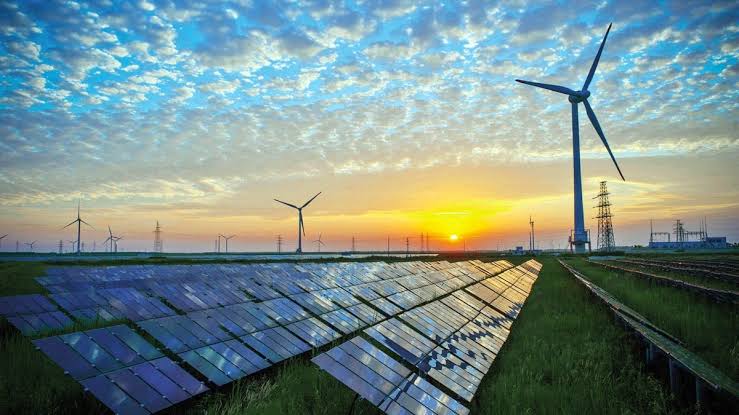
Energy Institute Report: A Critical Look at the Global Energy Transition
Before the first Industrial Revolution, Earth was a serene and green paradise. Our ancestors relied on intuition to predict weather under pristine conditions. However, the Industrial Revolution brought significant environmental changes through burning fossil fuels and releasing harmful emissions. Today, organisations like the Energy Institute guide efforts to make Earth greener.
While our ancestors had a direct connection with nature, we now understand human activities’ environmental impact better. Recognizing the need for action, we aim for a sustainable future, informed by reports like those from the Energy Institute. Let’s preserve Earth’s beauty and resources through conscious choices.
The Energy Institute recently published its annual Statistical Review of World Energy, revealing concerning figures regarding global energy transition goals. This comprehensive report provides crucial insights into the current state of energy production, consumption, and the progress (or lack thereof) towards achieving sustainable energy targets.
Breakdown of the Statistical Review of World Energy
Global Energy Consumption
The report indicates that global energy consumption increased by 1.3% in 2023. This rise is driven primarily by emerging economies in Asia and Africa. Despite significant efforts to reduce reliance on fossil fuels, coal, oil, and natural gas still account for 81% of the world’s energy consumption. Renewable energy sources, although growing, only make up 13% of the total energy mix.
Carbon Emissions
A major concern highlighted in the report is the rise in carbon emissions. In 2023, global carbon dioxide emissions from energy use increased by 0.9%, reaching 33.5 billion tonnes. This rise is mainly attributed to the increased use of coal in power generation, particularly in countries like China and India. The slow pace of transition to cleaner energy sources poses a significant threat to international climate goals, including the Paris Agreement targets.
Paris Agreement Targets
The Paris Agreement is an international treaty adopted in 2015 under the United Nations Framework Convention on Climate Change (UNFCCC). Its main goal is to limit global warming to well below 2 degrees Celsius above pre-industrial levels and to pursue efforts to limit the temperature increase to 1.5 degrees Celsius. Here are the key targets of the Paris Agreement:
- Mitigation: Each country must submit a Nationally Determined Contribution (NDC) outlining efforts to reduce greenhouse gas emissions. These contributions should be ambitious and represent progression over time.
- Adaptation: The agreement calls for enhanced support, including financial resources, technology transfer, and capacity-building, to help countries adapt to climate change impacts.
- Finance: Developed countries are expected to provide financial resources to assist developing countries with both mitigation and adaptation efforts. The goal is to mobilise $100 billion per year by 2020.
- Technology Transfer: The agreement promotes the development and transfer of environmentally friendly technologies to developing countries. It establishes a technology framework for cooperation on research, development, and deployment of climate-friendly technologies.
- Transparency and Accountability: The agreement establishes a transparency framework to track progress in implementing and achieving the targets. Countries must regularly report on emissions, efforts to reduce them, and adaptation and support provided.
The Paris Agreement encourages countries to regularly update and enhance their NDCs to reflect their highest ambition and emphasises global cooperation in addressing climate change.
Renewable Energy Growth
Renewable energy sources have seen substantial growth, with solar and wind power leading the way. Solar power capacity increased by 25% and wind power by 15% in 2023. However, this growth is still insufficient to meet the rising global energy demand and offset the dependency on fossil fuels.
Investment in Energy Transition
Investment in renewable energy and technologies is a positive aspect of the report. Global investment in clean energy reached $500 billion in 2023, an 8% increase from the previous year. Nevertheless, the report emphasises that much more investment is needed to accelerate the transition and achieve the necessary scale to impact global energy consumption significantly.
Energy Access
The review also sheds light on energy access disparities. Approximately 770 million people worldwide still lack access to electricity, with the majority residing in sub-Saharan Africa and rural parts of Asia. This lack of access hinders economic development and quality of life, highlighting the need for inclusive energy policies that address these disparities.
Influence on Global Policies
The Energy Institute’s Statistical Review of World Energy plays a pivotal role in shaping global energy policies. Policymakers rely on the report’s data to assess progress towards energy transition goals and identify areas needing urgent attention. For example, the European Union’s Green Deal and the USA’s Inflation Reduction Act have been influenced by such data, leading to increased funding and legislative support for renewable energy projects.
Criticisms of the Report
While the report is comprehensive, it is not without criticisms. Some experts argue that it underestimates the potential of emerging technologies such as hydrogen and energy storage systems. Additionally, there is concern that the report’s reliance on data from major energy companies might lead to biassed interpretations, underplaying the progress made by smaller, innovative energy firms.
Adaptation of Global Policies
Global policies are indeed adapted based on the insights provided by the review. For instance, many countries have revised their Nationally Determined Contributions (NDCs) under the Paris Agreement to reflect the latest data on emissions and energy consumption. The report’s findings have prompted several nations to enhance their renewable energy targets and implement stricter regulations on carbon emissions.
Impact on Foreign Aid
The review has also influenced changes in foreign aid, particularly in the energy sector. Countries and international organisations have increased funding for renewable energy projects in developing nations, recognising the need to support these regions in their transition to sustainable energy. This shift aims to address energy access inequalities and promote global energy security.
Public Opinion and International Regulations
Public opinion plays a significant role in shaping international energy regulations. The increasing awareness of climate change and environmental degradation, spurred by reports like the Statistical Review of World Energy, has led to greater public demand for action. This, in turn, pressures governments and international bodies to adopt more stringent policies and accelerate the energy transition.
Conclusion
The Energy Institute’s Statistical Review of World Energy provides a critical assessment of the current state of global energy and highlights the urgent need for accelerated action towards sustainable energy transition goals. The report underscores the challenges of reducing fossil fuel dependency, increasing renewable energy capacity, and addressing energy access disparities. It influences global policies, drives changes in foreign aid, and shapes public opinion, making it a vital tool in the global effort to combat climate change and promote sustainable development.
It is essential to recognise the collective responsibility in advocating for and supporting policies that drive the energy transition. The stakes are high, and the need for immediate and sustained action has never been more evident.
————————————————
Aric Jabari is a fellow of the Sixteenth Council



Zelenskyy: ‘President Trump is living in this disinformation space’